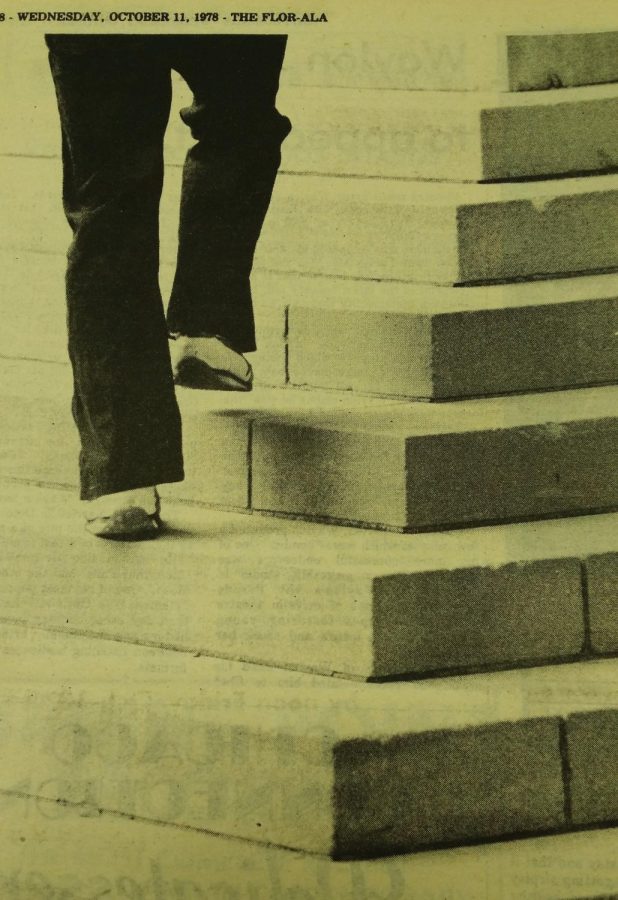Archived article shows steps a struggle 37 years ago
September 17, 2015
From Oct. 11, 1978
At 10:55 I seated myself in a classroom to wait for my 11 a.m. Western Civ. class to begin. I was perspiring slightly, gasping for breath, fighting mild waves of nausea and fervently wishing my heart would stop pounding so hard.
I was not suffering from pre-exam panic, love or influenza. My physical problems all stemmed from my class being located in room 306 of Bibb Graves Hall, and climbing the steps in Bibb Graves requires lots of stamina. I was a freshman, and just one of many things I was lacking was stamina. All I had the strength to do was to wonder why the UNA campus had so many steps.
One full year of college education did not enlighten me enough to enable me to answer my question about the steps. Instead, more questions arose, and maybe I asked them a little more intelligently.
Why, I wondered, with almost unlimited space available back then, were such buildings as Keller and O’Neal Halls not built on a single level? Surely the early administrators were not blessed with such foresight that they knew they must reserve space for the Student Union Building.
Gradually, education began to expand my mind (or so I hoped). And gradually, almost imperceptibly, something else began to happen. I often reached the second or third floor of a building breathing normally. I began to run up steps and developed a rhythmic jog coming down them. By the beginning of my senior year, I found that I actually enjoyed step-climbing. It wasn’t masochistic enjoyment either. It was more like the “thrill of victory.”
Slowly “one step at a time,” I began to understand.
In their ancient and infinite wisdom, UNA’s founding fathers had foreseen this would be “where students come first.” Their all-knowing minds perceived students who spend most of their time bent over books or slumped in desks tend to neglect physical exercise.
So by providing a way to exercise en route to classes, these benevolent souls contrived to keep us healthy—even if it kills us.












